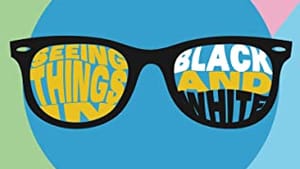Stay in the Loop
BSR publishes on a weekly schedule, with an email newsletter every Wednesday and Thursday morning. There’s no paywall, and subscribing is always free.
The Black experience is stranger than fiction
‘Seeing Things in Black and White’ by Antoine K. Stroman

We’re living through a movement that could bear the same significance as the Civil Rights Movement of the 1960s. And likely, it won’t be the last, because history repeats itself. Unfortunately, that means systemic racism, police brutality, and the laundry list of social conflicts happening in America are a long way from resolution. A new novella from Antoine K. Stroman, Seeing Things in Black and White, is a diffuser of those oppressive systems. We need as many diffusers as we can get.
Stroman is a writer, poet, songwriter, teacher, and director based in Philadelphia. His book opens with contemplations on growing up in the inner city, experiencing naïve jealousy of white people living large in suburbia, and lamenting over how the education system let the protagonist down. The narrative starts off as a promising, honest, and intimate look into one Black man’s come-up. Unfortunately, the composition tears at the seams from there.
Caught in the gray area
The book’s timeline of events moves at a pace that doesn’t give it a chance to breathe. I couldn’t get a sense of the details, let alone their context. The interactions with the political figures close to the narrator (particularly the mayor) arrive in a rapid and vague voice. Before we know it, there’s an anointment of an enigmatic local celebrity whose work is unclear, and a foreign speech that feels unconnected to any of the characters. Love interests come and go. Parties and gatherings whip at a blur. And because I’m missing details and can’t slow things down, I’m missing what’s at stake for the narrator. This is frustrating, considering the opening indicates what those stakes and motivations are, but only on the grand scale. We’re missing the narrator’s personal struggles and how he’s navigating his existence, and the story falls into an inadvertent ambiguity.
Tell me everything
It reads like the narrator is pulling punches, and I’m not sure why. The prose left me feeling lost and left in the dark, like meeting a long-lost friend reluctantly telling a personal story, but who’s only giving the highlights. I wanted to tell this book to slow down and tell me everything, because I want to hear everything. No use holding back with a story so affected by its discriminating world.
The editor in me wants to pick this book apart—for the sake of constructive criticism. The exposition is vague yet dense, catching the reader up to events that don’t seem to connect. The book rushes to its points, stumbling with typos, errors, and run-ons to the point that it’s distracting (and I’m relatively lenient when it comes to human error in prose).
Stranger than fiction
What’s vexing about Black and White is that its conclusion is powerful, leaving me wanting more despite the book’s overarching flaws. Here we have a character who is adamantly and courageously pushing against gentrification, surviving police brutality, and standing up to corrupt politicians, all while fielding questions of his own identity—navigating education, politics, working life, and how race impacted his romances. There’s heartache in these pages, watching friends and opportunities come and go without warning. I feel the sorrow, the anger, the anxiety, and the eagerness.
But bad copy, redundant words, typos, unusual formatting without apparent purpose, and rapid vagueness make me want to adopt this book and advocate for a deeper, more vulnerable and nuanced edition. This book could be a candid exploration of being Black in Philadelphia, a city that camouflages its perennial racism.
Seeing Things in Black and White is so much stranger than fiction that it felt like a memoir which hasn’t quite yet reached its full potential. Read it if you have the patience for its flaws, and stick around for the multi-talented Stroman and his other works.
Image description: The cover of the book Seeing Things in Black and White by Antoine K. Stroman. It has a green, pink, and light-blue background. At the center, there’s a blue circle wearing sunglasses like a face, with the words of the book title written in the lenses.
What, When, Where
Seeing Things in Black and White. By Antoine K. Stroman. Indiana: AuthorHouse, May 20, 2020. 122 pages, paperback; $13.99. Visit AuthorHouse.com for more info and to purchase.
Sign up for our newsletter
All of the week's new articles, all in one place. Sign up for the free weekly BSR newsletters, and don't miss a conversation.

 Kyle V. Hiller
Kyle V. Hiller